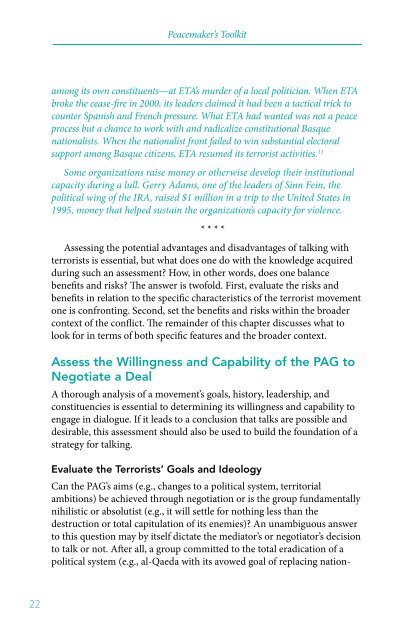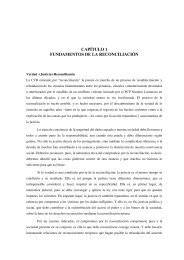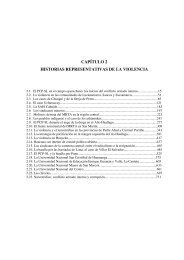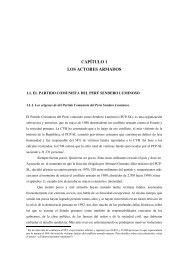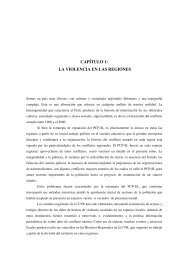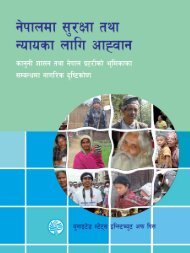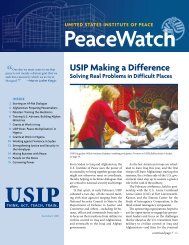Talking to Groups that Use Terror.pdf - United States Institute of Peace
Talking to Groups that Use Terror.pdf - United States Institute of Peace
Talking to Groups that Use Terror.pdf - United States Institute of Peace
You also want an ePaper? Increase the reach of your titles
YUMPU automatically turns print PDFs into web optimized ePapers that Google loves.
<strong>Peace</strong>maker’s Toolkitamong its own constituents—at ETA’s murder <strong>of</strong> a local politician. When ETAbroke the cease-fire in 2000, its leaders claimed it had been a tactical trick <strong>to</strong>counter Spanish and French pressure. What ETA had wanted was not a peaceprocess but a chance <strong>to</strong> work with and radicalize constitutional Basquenationalists. When the nationalist front failed <strong>to</strong> win substantial elec<strong>to</strong>ralsupport among Basque citizens, ETA resumed its terrorist activities. 11Some organizations raise money or otherwise develop their institutionalcapacity during a lull. Gerry Adams, one <strong>of</strong> the leaders <strong>of</strong> Sinn Fein, thepolitical wing <strong>of</strong> the IRA, raised $1 million in a trip <strong>to</strong> the <strong>United</strong> <strong>States</strong> in1995, money <strong>that</strong> helped sustain the organization’s capacity for violence.* * * *Assessing the potential advantages and disadvantages <strong>of</strong> talking withterrorists is essential, but what does one do with the knowledge acquiredduring such an assessment? How, in other words, does one balancebenefits and risks? The answer is tw<strong>of</strong>old. First, evaluate the risks andbenefits in relation <strong>to</strong> the specific characteristics <strong>of</strong> the terrorist movemen<strong>to</strong>ne is confronting. Second, set the benefits and risks within the broadercontext <strong>of</strong> the conflict. The remainder <strong>of</strong> this chapter discusses what <strong>to</strong>look for in terms <strong>of</strong> both specific features and the broader context.Assess the Willingness and Capability <strong>of</strong> the PAG <strong>to</strong>Negotiate a DealA thorough analysis <strong>of</strong> a movement’s goals, his<strong>to</strong>ry, leadership, andconstituencies is essential <strong>to</strong> determining its willingness and capability <strong>to</strong>engage in dialogue. If it leads <strong>to</strong> a conclusion <strong>that</strong> talks are possible anddesirable, this assessment should also be used <strong>to</strong> build the foundation <strong>of</strong> astrategy for talking.Evaluate the <strong>Terror</strong>ists’ Goals and IdeologyCan the PAG’s aims (e.g., changes <strong>to</strong> a political system, terri<strong>to</strong>rialambitions) be achieved through negotiation or is the group fundamentallynihilistic or absolutist (e.g., it will settle for nothing less than thedestruction or <strong>to</strong>tal capitulation <strong>of</strong> its enemies)? An unambiguous answer<strong>to</strong> this question may by itself dictate the media<strong>to</strong>r’s or negotia<strong>to</strong>r’s decision<strong>to</strong> talk or not. After all, a group committed <strong>to</strong> the <strong>to</strong>tal eradication <strong>of</strong> apolitical system (e.g., al-Qaeda with its avowed goal <strong>of</strong> replacing nation-22


